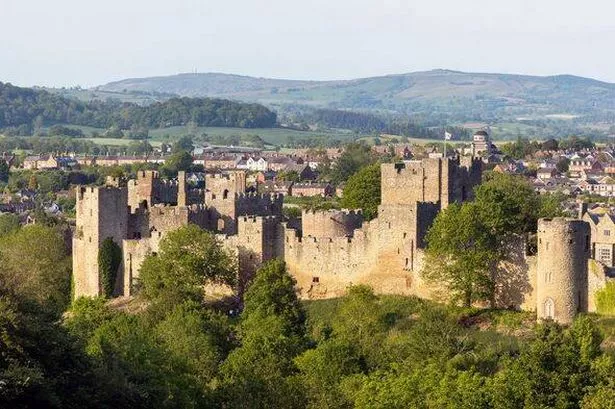Ludlow is a beautiful market town in Shropshire, which has everything you could want, from regular food festivals to historic sites and stunning countryside walks
Those seeking a peaceful escape from Britain’s bustling cities should consider Ludlow, a picturesque market town in Shropshire that offers everything from regular food festivals to historic landmarks and breathtaking countryside walks. Whilst sometimes overshadowed by neighbouring Shrewsbury and Hereford, Ludlow remains an essential destination for anyone visiting the region.
From its medieval castle and museums to restaurants housed in ancient halls and pubs within 16th-century buildings, Ludlow’s rich heritage is proudly showcased throughout. The castle dates back to the Norman Conquest and ranks among the “finest medieval ruins” in Britain, according to the Ludlow Castle website.
Given its location near Wales, Ludlow Castle served a crucial function during the English-Welsh conflicts. In 1223, King Henry III and Welsh prince Llywelyn ap Iorwerth held peace negotiations at the fortress.
Throughout history, Ludlow Castle has housed many prominent personalities, including Roger Mortimer, who joined forces with Queen Isabella to depose her husband, Edward II, in 1327.
During the 15th century, Edward IV frequently visited Ludlow and established a governing council there to oversee his Welsh territories.
Edward IV also dispatched his sons, the future King Edward V and his brother Prince Richard, to reside at the castle. The brothers would subsequently become infamous as the Princes in the Tower, after they vanished from the Tower of London in 1483, reports the Express.
Ludlow Castle also holds profound historical significance as the place where Prince Arthur died in 1502, a tragedy that ultimately paved the way for his younger brother to ascend the throne as King Henry VIII.
Since the Civil War, Ludlow Castle has gradually crumbled into ruins, though much of its impressive exterior remains intact, making it well worth exploring.
Another must-see attraction is St Laurence’s Church, which, like the castle, traces its origins back to the Norman invasion. As Shropshire’s largest parish church, St Laurence’s has earned the nickname “Cathedral of the Marches”.
Those seeking outdoor relaxation can visit Ludlow Millennium Green or enjoy a walk along the Mortimer Trail, a long-distance footpath stretching from Ludlow to Kington on the Herefordshire-Wales border.
No trip to Ludlow would be complete without stopping at the renowned Ludlow Farm Shop, which promises a “one-of-a-kind” shopping experience, according to the town’s official website.
The town regularly plays host to Antique, Local Produce and Craft Markets. It’s worth checking the Ludlow Market website before your visit if you fancy attending any of these events.
As the festive season approaches, families will be delighted to learn that Santa will be taking up residence at Ludlow Castle from 6 to 23 December, giving children the chance to enjoy a magical encounter with Father Christmas in the castle’s stunning grotto.

